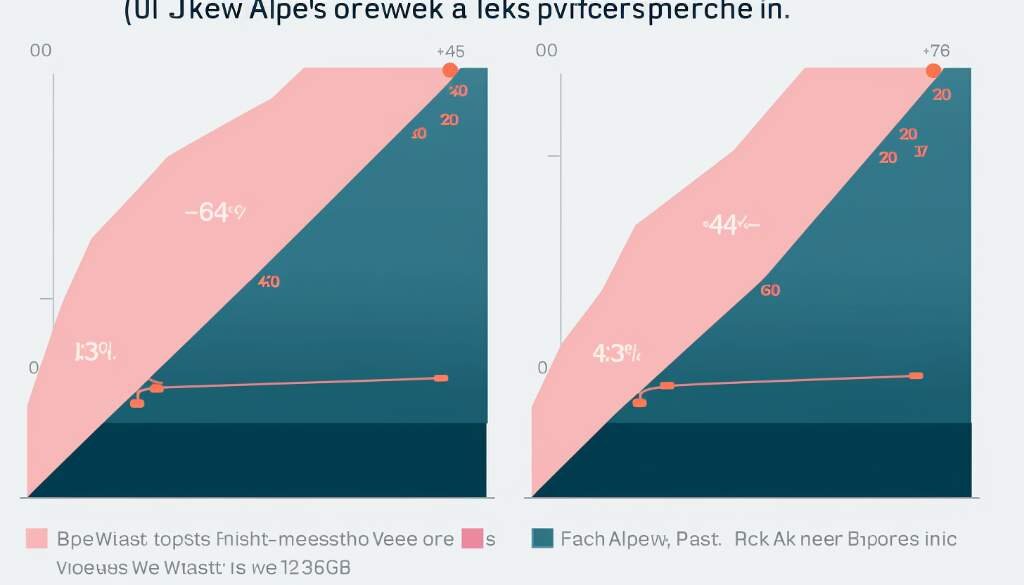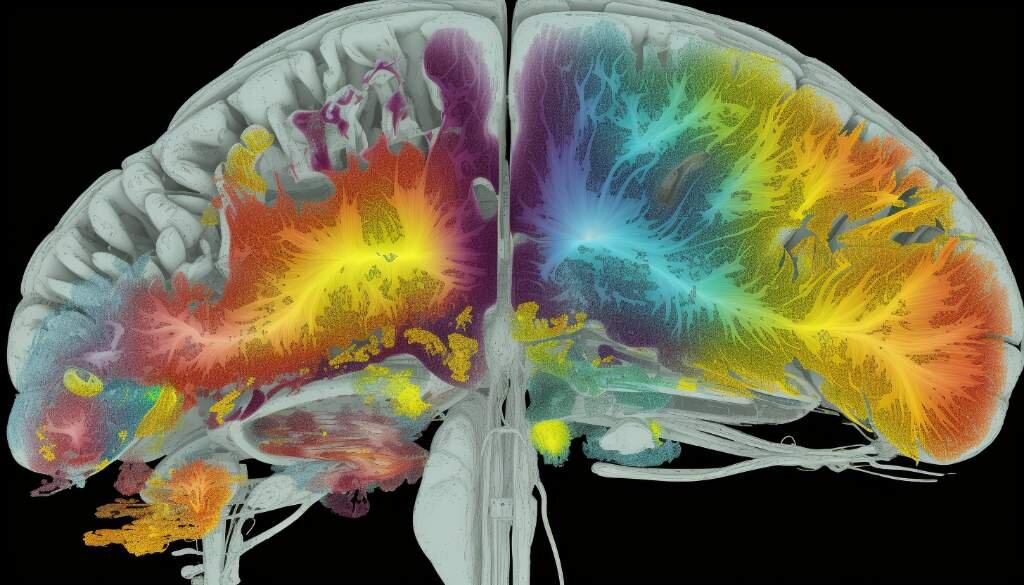
Introduction
In this section, we will explore the fascinating link between hormones and risk-taking behavior. We will delve into the role of hormones, such as testosterone and cortisol, in shaping our propensity for taking risks throughout our lives. Additionally, we will uncover the influence of cortisol on risk-taking and examine how individual responses to cortisol can modulate our decision-making. To provide a deeper understanding, we will also explore the insights from neuroscience, including the impact of impulsivity and herd mentality on risk-taking, as well as mapping brain responses in the context of risk. Furthermore, we will explore the intersection of risk-taking and financial decisions, highlighting the conflict situations that arise and the perspective offered by neuroscience and economics. This comprehensive exploration will shed light on the complex relationship between hormones, decision-making, and risk appetite.
Understanding Risk-Taking
Understanding risk-taking is crucial for gaining insights into human behavior and decision-making. It refers to the propensity of individuals to engage in activities or make choices that have uncertain outcomes and the potential for negative consequences. Risk-taking behavior can vary significantly between individuals and is influenced by various factors including biology, psychology, and social influences.
One important factor that impacts risk-taking behavior is the role of hormones. Hormones are chemical messengers in the body that regulate various functions, including behavior, emotions, and cognition. Two key hormones that have been extensively studied in relation to risk-taking are testosterone and cortisol.
Testosterone, often referred to as the ‘male hormone', is associated with a range of behaviors including risk-taking. Research has shown that testosterone plays a role in shaping risk preferences and can influence an individual's willingness to take risks. It has been found that individuals with higher levels of testosterone tend to exhibit more risk-averse behavior, while those with lower levels of testosterone may be more inclined to take risks.
Interestingly, the relationship between testosterone and risk-taking varies across different stages of life. During adolescence, when hormone levels are fluctuating, risk-taking behavior tends to peak. This is believed to be due to the surge in testosterone levels during this period. Adolescent risk-taking can have significant implications as it may lead to engaging in dangerous activities or making impulsive decisions.
In adulthood, the relationship between testosterone and risk-taking becomes more nuanced. While testosterone continues to influence risk-taking behavior, other factors such as cognitive processes and social influences also come into play. Gender differences in risk appetite have also been observed, with males generally exhibiting higher levels of risk-seeking behavior compared to females. However, it's important to note that individual differences within gender groups are significant, and not all males or females display the same risk-taking tendencies.
Another hormone that plays a role in risk-taking behavior is cortisol. Cortisol is often referred to as the ‘stress hormone' and is released in response to stressful situations. Research has found that cortisol can impact an individual's risk-taking behavior, with high levels of cortisol being associated with risk-averse behavior. This suggests that individuals experiencing stress or anxiety may be less likely to take risks.
It's important to note that hormone levels are not static and can change over a person's lifetime. Hormone trajectories can be influenced by various factors such as age, genetics, environment, and life experiences. Understanding these lifetime trajectories in hormone levels can provide valuable insights into the dynamics of risk-taking behavior and its underlying mechanisms.
The Role of Hormones
Understanding risk-taking behavior requires an examination of the role hormones play in influencing our decision-making. Hormones, such as testosterone and cortisol, have been found to have significant effects on risk appetite and behavior.
Testosterone, a hormone primarily associated with male characteristics, has been linked to increased risk-taking in various studies. Research has shown that individuals with higher testosterone levels tend to engage in more risk-seeking behaviors. Testosterone levels are particularly influential during adolescence, a period marked by heightened risk-taking tendencies. Teenagers with higher testosterone levels have been found to engage in more risky behaviors, such as substance abuse and reckless driving.
However, testosterone's role in risk-taking is not limited to adolescence. In adulthood, testosterone continues to impact risk appetite, although the effects may vary based on individual differences and context. Some studies suggest that higher levels of testosterone are associated with financial risk-taking, such as investing in stocks or starting a business. On the other hand, lower testosterone levels have been linked to risk aversion.
It's important to note that risk-taking behavior is not solely influenced by testosterone. Cortisol, a hormone associated with stress and arousal, also plays a significant role. Cortisol levels have been found to modulate an individual's response to risky situations. High cortisol levels have been associated with increased risk aversion, as individuals become more cautious and focus on avoiding potential losses.
In addition to the immediate effects of hormonal fluctuations, research suggests that lifetime trajectories in hormone levels can impact risk-taking behavior. For example, individuals who had higher testosterone levels during adolescence may continue to display risk-seeking behavior in adulthood.
Understanding the role of hormones in risk-taking behavior provides valuable insights into our decision-making processes. By recognizing the influence of testosterone and cortisol, we can shed light on why individuals display varying levels of risk appetite and develop strategies to manage risk effectively.
Testosterone and Cortisol
The sub-section titled ‘Testosterone and Cortisol' explores the relationship between these hormones and risk-taking behavior.
Hormones play a crucial role in shaping human behavior, including risk-taking tendencies. Testosterone and cortisol are two hormones that have been extensively studied in relation to risk-taking.
Testosterone is often associated with increased risk appetite. Research has shown that higher levels of testosterone can lead to more impulsive decision-making and a greater willingness to take risks. This is particularly evident during adolescence when testosterone levels are at their peak. Adolescents, both males and females, tend to engage in more risk-taking behaviors compared to other age groups.
In adulthood, testosterone continues to play a role in risk-taking, although its influence may vary depending on individual factors. Some studies suggest that higher testosterone levels are associated with entrepreneurial behavior and willingness to take financial risks. However, it is important to note that risk-taking is influenced by a complex interplay of various factors, and testosterone is just one piece of the puzzle.
Cortisol, on the other hand, has a different role in risk-taking. Known as the stress hormone, cortisol is released in response to perceived threats or stressful situations. Research suggests that cortisol levels affect risk perception and decision-making. High cortisol levels can lead to a more cautious approach, while low cortisol levels may make individuals more inclined to take risks.
It is important to understand that hormone levels fluctuate throughout a person's lifetime. Testosterone levels, for example, are highest during adolescence and tend to decline gradually with age. Cortisol levels also vary depending on individual circumstances and stress levels.
Overall, the levels of testosterone and cortisol in an individual's body can impact their risk-taking behavior to varying degrees. However, it is essential to consider other factors such as individual differences, environmental influences, and cognitive processes that also contribute to risk-taking.
Lifetime Trajectories in Hormone Levels
Lifetime trajectories of hormone levels play a significant role in understanding risk-taking behavior. Hormones, such as testosterone and cortisol, fluctuate throughout a person's life, influencing their risk appetite and decision-making process.
During adolescence, hormone levels experience a surge, particularly in testosterone. This increase in testosterone during puberty is linked to the heightened risk-taking behavior observed in teenagers. Adolescents are more inclined to engage in risky activities, such as experimenting with drugs, driving recklessly, or participating in daredevil stunts. It is believed that the hormonal changes during this stage contribute to impulsivity and sensation-seeking behaviors.
As individuals progress into adulthood, hormone levels stabilize, and risk-taking tendencies may vary based on individual factors. While testosterone still plays a role in risk appetite, it may be influenced by other factors such as life experiences, social environment, and personal values. Some adults continue to exhibit high-risk behaviors, while others become more risk-averse.
It is important to note that gender differences also impact risk-taking behavior. Research suggests that men generally exhibit higher risk appetite compared to women. This disparity may partly be attributed to variations in testosterone levels between genders. However, societal and cultural factors also contribute to these differences.
Understanding the trajectories of hormone levels throughout a person's lifetime provides valuable insights into their risk-taking behavior. By examining the role of hormones, particularly testosterone, in different stages of life, researchers can gain a better understanding of why individuals engage in risky activities and make certain decisions. This knowledge contributes to the field of neurobiology and can aid in developing strategies to promote healthier decision-making and manage risk-taking tendencies.

Testosterone and Risk-Taking
Testosterone and risk-taking are closely linked, with testosterone playing a significant role in influencing individuals' willingness to take risks. Testosterone is a hormone that is primarily found in males but is also present in smaller quantities in females. It is responsible for various physiological and behavioral characteristics, including aggression, competitiveness, and risk-taking.
In this section, we will explore the impact of testosterone on risk-taking behavior across different stages of life, including adolescence and adulthood. We will also examine gender differences in risk appetite and how testosterone contributes to these variations. Additionally, we will discuss the relationship between testosterone and cortisol, another hormone that influences risk-taking behavior.
By gaining a deeper understanding of the role of testosterone in risk-taking, we can uncover valuable insights into human behavior and decision-making. Let's dive into the sub-sections to explore these topics in more detail.
Adolescent Risk-Taking
Adolescence is a period characterized by significant changes in hormone levels and risk-taking behavior. During this phase, the brain undergoes extensive development, especially in areas responsible for decision-making and impulse control. Researchers have found a strong correlation between the surge in testosterone levels and increased risk-taking tendencies in adolescents.
Testosterone, a hormone primarily associated with male characteristics, plays a crucial role in shaping behaviors related to aggression and competitiveness. Studies have shown that higher testosterone levels in adolescents are linked to heightened risk-taking behaviors, such as reckless driving, substance abuse, and engaging in dangerous sports or activities.
Furthermore, the adolescent brain's reward system, which is governed by the hormone dopamine, becomes highly sensitive during this period. This heightened sensitivity further contributes to the risk-seeking nature of adolescents.
It is important to note that not all adolescents exhibit the same level of risk-taking behavior. Individual factors such as personality traits, environmental influences, and socialization also play a significant role. However, testosterone levels remain a key contributing factor.
Additionally, gender differences in risk appetite during adolescence have been observed. While both male and female teenagers experience a surge in testosterone levels, studies suggest that males tend to engage in riskier behaviors compared to females. This difference may be influenced by societal expectations, gender norms, and individual variations in hormone production.
Understanding the link between testosterone and risk-taking behavior in adolescents is essential for developing effective interventions and strategies to promote healthy decision-making during this crucial developmental stage.
Adult Risk-Taking
In the context of testosterone and risk-taking, understanding adult risk-taking is crucial. Adult risk-taking refers to the behavior of taking risks in decision-making and activities that are typically associated with individuals in their adulthood.
Research suggests that testosterone levels play a significant role in adult risk-taking. Studies have shown that higher levels of testosterone are often associated with increased risk-taking behavior in adults. This can manifest in various aspects of life, such as career choices, investments, and even recreational activities.
One explanation for this relationship is that testosterone is known to enhance confidence and competitiveness, which can lead individuals to take more risks. Additionally, testosterone may also influence cognitive processes such as decision-making and reward processing, further contributing to risk-taking behavior.
However, it is important to note that the relationship between testosterone and risk-taking in adults is complex and can be influenced by various factors. For example, individual differences in personality traits, socio-cultural factors, and environmental influences can also modulate the impact of testosterone on risk-taking behavior.
Gender differences in risk appetite also come into play when discussing adult risk-taking. Research suggests that men tend to engage in riskier behaviors compared to women, and this can be partially attributed to differences in testosterone levels. However, it is important to note that gender differences in risk-taking are not solely determined by hormones and are also influenced by societal factors and individual experiences.
Overall, understanding the relationship between testosterone and adult risk-taking provides valuable insights into the factors that influence decision-making and risk behavior in adulthood. By delving deeper into this topic, researchers can further explore the underlying mechanisms and implications of testosterone on risk-taking behavior, ultimately contributing to a better understanding of human decision-making processes.
Gender Differences in Risk Appetite
Gender differences in risk appetite are a fascinating area of study when it comes to the relationship between testosterone and risk-taking. While testosterone is commonly associated with risk-taking behavior, research has shown that gender plays a significant role in how testosterone influences risk appetite.
Studies have consistently found that men, on average, display a higher level of risk-taking behavior compared to women. This is believed to be partially influenced by the higher levels of testosterone typically found in men. Testosterone enhances the brain's reward processing system, leading to increased motivation for rewards and a higher tolerance for taking risks.
One study conducted by Reimers and Diekhof (2015) found that men with higher levels of testosterone were more inclined to take financial risks compared to men with lower testosterone levels. The study also observed that women, regardless of their testosterone levels, displayed lower levels of risk-taking behavior in comparison.
However, it is important to note that gender differences in risk appetite are not solely attributed to testosterone. Sociocultural factors, upbringing, and cognitive factors play a significant role as well. These factors can influence risk aversion or tolerance, shaping individuals' risk appetite independent of testosterone levels.
In addition, research has also suggested that women may exhibit different types of risk-taking behavior compared to men. While men may engage in more physical or financial risk-taking, women are more likely to engage in social risk-taking. Social risk-taking can include activities such as public speaking, networking, or taking on leadership roles.
In conclusion, while testosterone is known to influence risk-taking behavior, gender differences in risk appetite are complex. Men, on average, tend to display higher levels of risk-taking behavior compared to women, partially due to higher levels of testosterone. However, individual variation within each gender and other factors such as sociocultural influences and upbringing also play a significant role in shaping risk appetite.

The Influence of Cortisol
The Influence of Cortisol is a critical factor in understanding risk-taking behavior. Cortisol, often referred to as the stress hormone, plays a significant role in modulating our response to risky situations. It is a hormone produced by the adrenal glands in response to stress and acts as a natural alarm system to help regulate our body's response to threats.
In the following sub-sections, we will explore how cortisol impacts risk-taking behavior. We will examine the relationship between cortisol and its impact on risk-taking, as well as how individuals modulate their cortisol response in different situations.
Let's delve into the fascinating world of cortisol and its influence on our decision-making processes.
Cortisol and Its Impact on Risk-Taking
Cortisol, commonly known as the stress hormone, plays a significant role in influencing risk-taking behavior. This sub-section explores the impact of cortisol on risk-taking and sheds light on how it affects our decision-making process.
Cortisol is released by the adrenal glands in response to stress and helps regulate various physiological processes in the body. It is often associated with the fight-or-flight response, mobilizing energy and preparing the body to respond to potential threats.
When it comes to risk-taking, cortisol has been found to have a complex relationship. While higher levels of cortisol can be detrimental to decision-making and increase risk aversion, lower levels of cortisol can also have similar effects.
Studies have shown that individuals with elevated cortisol levels tend to exhibit more cautious behavior and are less likely to take risks. This can be attributed to the physiological and psychological effects of cortisol, which promote a heightened sense of vigilance and risk aversion.
On the other hand, individuals with lower cortisol levels may display a higher propensity for risk-taking. Lower cortisol levels have been linked to increased sensation-seeking behavior and a greater tolerance for uncertainty. This suggests that cortisol plays a crucial role in modulating our risk preferences and willingness to engage in risky behaviors.
Furthermore, the relationship between cortisol and risk-taking is not static and can vary depending on the context and individual differences. For example, certain individuals may exhibit a blunted cortisol response to stress, which can lead to heightened risk-taking behavior. Conversely, others may have a hyperactive cortisol response, which can contribute to increased risk aversion.
It is also important to note that cortisol interacts with other hormones and neurotransmitters in the brain to shape risk-taking behavior. For instance, cortisol can interact with dopamine, a neurotransmitter associated with reward processing, to influence our motivation to seek out and engage in rewarding or risky activities.
In summary, cortisol plays a pivotal role in determining our risk-taking behavior. While elevated cortisol levels can promote risk aversion, lower cortisol levels may increase the likelihood of engaging in risky behaviors. The intricate interplay between cortisol, other hormones, and individual differences adds further complexity to this relationship.
Individual Modulation of Cortisol Response
Individual modulation of cortisol response plays a significant role in understanding risk-taking behavior.
Cortisol, often referred to as the stress hormone, is released by the adrenal glands in response to stress or perceived threats. It helps regulate various bodily functions, including metabolism, immune response, and the body's stress response.
However, the effects of cortisol on risk-taking can vary depending on the individual's ability to modulate their cortisol response. Some individuals may demonstrate a higher level of cortisol response to stressful situations, while others may have a lower response. This modulation of cortisol can influence how individuals perceive and process risk, leading to differences in risk-taking behavior.
One important factor in individual modulation of cortisol response is genetic predisposition. Certain genetic variations can influence how an individual's body responds to stress and regulates cortisol levels. For example, variations in the gene encoding the glucocorticoid receptor, which is involved in cortisol regulation, can impact an individual's stress response and their risk-taking tendencies.
Additionally, environmental factors can also contribute to the modulation of cortisol response. Early life experiences, such as childhood trauma or chronic stress, can influence how an individual's body responds to stress and regulates cortisol. These early life experiences can shape the stress response system, impacting risk perception and risk-taking behavior.
Furthermore, individual differences in coping strategies and resilience can also affect cortisol response and risk-taking behavior. Individuals who have effective coping mechanisms and higher levels of resilience may be able to modulate their cortisol response more efficiently, leading to healthier risk-taking behavior.
Understanding the individual modulation of cortisol response is crucial for understanding risk-taking behavior in various contexts, including financial decision-making, career choices, and even everyday life situations. By examining the interplay between genetics, environment, and individual differences, researchers can gain insights into the complex relationship between cortisol modulation and risk-taking.

Neuroscience Insights
Neuroscience Insights is a fascinating field of study that explores the complex relationship between the brain and human behavior. It involves the application of scientific knowledge and techniques to understand how our brain functions and how it influences our decision-making processes. By analyzing brain activity and mapping neural pathways, neuroscience provides valuable insights into various aspects of human behavior, including risk-taking, impulsivity, and financial decision-making.
In the upcoming sections, we will delve deeper into some of the key findings and theories within neuroscience that shed light on our understanding of risk-taking and decision-making. These include exploring the role of hormones such as testosterone and cortisol, as well as the impact of cortisol on risk-taking behaviors. Additionally, we will also touch upon how neuroscience enables us to study impulsivity and herd mentality, and how it helps us map brain responses to gain a better understanding of financial decision-making and conflict situations.
Impulsivity and Herd Mentality
Impulsivity and herd mentality are two interesting concepts that play a significant role in risk-taking behavior and decision-making. Understanding these concepts provides valuable insights into the underlying mechanisms of human behavior.
Impulsivity refers to the tendency to act on immediate desires or urges without considering the potential consequences. It is a personality trait that can vary across individuals and is associated with a higher propensity for risk-taking. Research has shown that impulsive individuals are more likely to engage in risky behaviors such as drug abuse, gambling, and unsafe sexual practices. The neuroscience behind impulsivity suggests that it is linked to an imbalance in brain regions involved in decision-making and self-control.
Herd mentality, on the other hand, refers to the tendency of individuals to conform to the behavior and decisions of a larger group. It is also known as the bandwagon effect or groupthink. People are often influenced by the actions and opinions of others, which can lead to a collective bias in decision-making. This phenomenon is particularly prominent in situations where uncertainty is high or when individuals lack confidence in their own judgment.
Impulsivity and herd mentality are interrelated and can reinforce each other in certain contexts. For instance, the presence of others engaging in risky behavior can increase the likelihood of impulsive individuals joining in. This can be seen in situations such as mob violence, financial bubbles, or even online trends such as viral challenges.
From a neuroscience perspective, studies have shown that impulsivity and herd mentality are associated with distinct patterns of brain activity. Impulsive individuals tend to have reduced activity in the prefrontal cortex, which is responsible for self-control and decision-making. They also show heightened activity in regions associated with reward and pleasure, such as the ventral striatum. In contrast, herd mentality is associated with increased activity in brain areas involved in social perception and conformity, such as the medial prefrontal cortex. These neural correlates provide insights into the underlying mechanisms of these behaviors.
Understanding impulsivity and herd mentality is important not only in the context of risk-taking but also in various domains such as marketing, politics, and public health. Recognizing these influences can help individuals make more informed decisions and mitigate the potential negative consequences of impulsive or herd-driven behavior.
Mapping Brain Responses
This sub-section explores the fascinating topic of mapping brain responses in the context of risk-taking behavior. Understanding how the brain functions and reacts during moments of decision-making can provide valuable insights into why individuals may engage in risky behaviors.
Researchers have conducted numerous studies using various neuroimaging techniques to map the brain responses associated with risk-taking. One common method is functional magnetic resonance imaging (fMRI), which measures changes in blood flow to different brain regions.
One area of interest is the prefrontal cortex, which plays a crucial role in decision-making and impulse control. Studies have shown that during risky situations, the prefrontal cortex exhibits heightened activity, indicating increased cognitive processing and evaluation of potential outcomes.
Another brain region often examined is the amygdala, which is involved in emotional processing and fear responses. Research has found that the amygdala's activity is closely linked to risk-taking behavior, with individuals who engage in more risky behaviors showing greater amygdala activation.
Additionally, studies have explored the role of the striatum in risk-taking. The striatum is associated with reward processing and plays a significant role in the brain's reward system. It has been found that individuals who are more likely to take risks have heightened activity in the striatum, suggesting a stronger response to potential rewards.
Furthermore, research has shown that risk-taking behavior is influenced by the synchronization between different brain regions. Some studies have observed increased connectivity between the prefrontal cortex and the striatum during risk-taking, indicating a coordinated communication between these regions.
Interestingly, mapping brain responses during risk-taking has also revealed differences between genders. For example, studies have demonstrated that males tend to show greater activation in the prefrontal cortex and striatum, whereas females exhibit more activity in the anterior cingulate cortex, an area associated with emotional regulation and decision-making.
In summary, mapping brain responses provides valuable insights into the neural mechanisms underlying risk-taking behavior. By examining the activity and connectivity of brain regions involved in decision-making, researchers can gain a better understanding of why individuals engage in risky behaviors and how these behaviors may differ between genders.

Financial Decisions and Conflict
Financial decisions and conflict are two interconnected aspects of human behavior that play a crucial role in various aspects of our lives. Financial decisions are choices we make regarding how we allocate and invest our financial resources, such as money, assets, and investments. These decisions can range from everyday choices, like budgeting and spending, to more significant decisions, such as buying a house or investing in the stock market.
Conflict, on the other hand, refers to a state of opposition, disagreement, or discord arising from differing interests, opinions, or perceptions. In the context of financial decisions, conflict can emerge from competing interests and preferences, risk and reward trade-offs, and the potential for financial loss or gain.
Understanding the relationship between financial decisions and conflict is essential, as it allows us to gain insights into the factors that influence decision-making processes and the outcomes that result from these decisions. In the following sub-sections, we will explore various perspectives and insights related to financial decisions and conflict.
- The first sub-section will examine the concept of financial decisions as conflict situations, exploring how conflicting interests and preferences can shape our decision-making processes.
- The second sub-section will provide a multidisciplinary perspective by integrating insights from neuroscience and economics, helping us gain a deeper understanding of the underlying mechanisms and factors that influence financial decision-making and conflict.
Financial Decisions as Conflict Situations
This sub-section explores the concept of financial decisions as conflict situations within the broader theme of Financial Decisions and Conflict. In the previous sections, we discussed the influence of hormones and neuroscience on risk-taking behavior. Now, we will focus on how financial decisions can be seen as conflicts and the implications of this perspective.
Financial decisions often involve multiple factors, such as competing interests, limited resources, and various potential outcomes. These factors create a sense of conflict within individuals when making financial choices.
One aspect of financial decisions as conflict situations is the conflict between short-term gains and long-term goals. Individuals may face the dilemma of choosing immediate financial gratification or prioritizing long-term financial stability. This conflict can lead to decision-making processes that are driven by short-term impulses rather than long-term rationality.
Another conflict arises from conflicting financial priorities. Individuals may have conflicting financial goals, such as saving for retirement, paying off debts, and pursuing investment opportunities. Deciding which priority to focus on becomes a conflicting situation that requires careful consideration and evaluation of the potential risks and rewards of each option.
Financial decisions also involve conflicts between risk and security. Some individuals may be more risk-averse and prefer safe investment options, while others may be more inclined towards taking risks for potentially higher returns. This conflict between risk and security becomes crucial when making investment decisions and can significantly impact the outcome.
Furthermore, financial decisions often involve conflicts between individual interests and social obligations. Individuals may face conflicts between their personal financial goals and the financial needs of their family, business partners, or community. Balancing individual aspirations with collective well-being adds another layer of complexity to financial decision-making.
Understanding financial decisions as conflict situations provides valuable insights into the underlying psychological and emotional dynamics involved. By recognizing and examining the conflicts inherent in financial decision-making, individuals can make more informed choices and develop strategies to navigate these conflicts effectively.
Understanding from Neuroscience and Economics Perspectives
This sub-section explores the understanding of financial decisions and conflict from the perspectives of neuroscience and economics. It delves into the complex interplay between these two fields and how they contribute to our comprehension of decision-making processes.
In recent years, researchers from both neuroscience and economics have collaborated to gain deeper insights into how the brain and economic factors influence financial decision-making. These interdisciplinary efforts have shed light on various aspects of decision-making, including risk perception, reward processing, and the impact of emotions on financial choices.
Neuroscience has provided valuable information on the neural mechanisms underlying decision-making. Advanced brain imaging techniques, such as functional magnetic resonance imaging (fMRI) and electroencephalography (EEG), have allowed researchers to map brain responses and identify specific areas involved in decision-making processes.
Through neuroscience research, it has been found that financial decisions often involve a conflict between immediate gratification and long-term goals. The brain's reward system, which is primarily driven by the neurotransmitter dopamine, plays a crucial role in this conflict. The anticipation of financial rewards activates the brain's reward system, leading to an increased willingness to take risks.
On the other hand, economics provides valuable frameworks and models to analyze decision-making under various conditions of uncertainty and conflict. Economic theories, such as prospect theory, behavioral economics, and game theory, offer insights into how individuals make financial decisions based on their preferences, attitudes, and beliefs.
Prospect theory, for example, explains decision-making under risk and uncertainty. It suggests that individuals evaluate potential gains and losses relative to a reference point and make decisions based on the perceived value rather than the objective outcomes. This theory helps explain why individuals may take higher risks to avoid losses or to pursue gains.
Behavioral economics, a field that combines insights from both psychology and economics, examines how cognitive biases and heuristics influence decision-making. These biases and heuristics, such as loss aversion, anchoring, and availability heuristic, can significantly impact financial choices even when they are irrational or suboptimal.
Game theory, widely used in economics, analyzes strategic decision-making in situations where multiple individuals or agents interact. It helps explain how individuals may make decisions based on their interactions with others and their expectations of others' behavior. Understanding the dynamics of decision-making in competitive or cooperative settings is crucial in the context of financial decisions.
By integrating neuroscience and economics perspectives, researchers aim to gain a more comprehensive understanding of financial decisions and the underlying mechanisms that drive them. This interdisciplinary approach has the potential to enhance our ability to predict, explain, and influence financial decision-making.

Conclusion
In conclusion, this article has explored the relationship between hormones, specifically testosterone and cortisol, and risk-taking behavior. It has been established that testosterone plays a crucial role in shaping risk-taking tendencies, with higher levels of testosterone often associated with increased risk appetite. This impact is particularly evident during adolescence, a stage when hormone levels are fluctuating significantly. However, testosterone levels are not the sole determinants of risk-taking behavior, as cortisol also influences decision-making processes. Cortisol, commonly known as the stress hormone, can modulate risk-taking behavior in different individuals depending on their cortisol response.
Furthermore, neuroscience studies have provided valuable insights into the neural mechanisms underlying risk-taking behavior. Impulsivity and the influence of herd mentality have been identified as significant factors in explaining why individuals engage in risky behaviors. Additionally, brain mapping has allowed researchers to pinpoint specific brain regions that are activated during decision-making processes, shedding light on the complex nature of risk-taking.
Financial decisions are often characterized as conflict situations, where individuals have to weigh the potential gains against the possibility of losses. Understanding risk-taking from both neuroscience and economics perspectives can provide a more comprehensive understanding of the factors influencing financial decision-making.
In conclusion, the interaction between hormones, neural processes, and the decision-making context plays a significant role in shaping risk-taking behavior. By gaining a deeper understanding of these influences, individuals can make more informed decisions, both in their personal lives and in the realm of finance.








